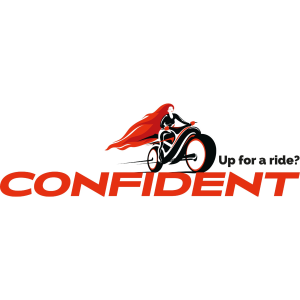Photography is about getting immersed in the process and deeply knowing the subject matter and the story, says Coșkun Așar, photographer, producer, screenwriter, and director. He compares the camera to a musical instrument, with the output more important than the tool. For him, the camera is a means to ask questions, explore, and learn.
Well-known for his works, including the documentary “Koudelka: Crossing the Same River”, Coșkun Așar believes that while access to technology and the obsession for social media have somewhat commoditized the photographic process, its role remains unchanged: to serve those who wield it, no matter the domain.
Coșkun's work will be shown at Bucharest Photofest (October 6-15, 2023). At its 8th edition, the festival will host over 50 events under the theme IDENTITY. Join artists from Greece, Germany, Iceland, Spain, the UK, the USA, Denmark, The Netherlands and more for a meaningful visual journey.
Keep reading to discover Coșkun's story and artistic vision.
Key Defining Moments
I initially ventured into photography through my studies in cinema at the Faculty of Communication. Concurrently, I began taking courses in journalism, press photography, and documentary photography. However, it was a pivotal moment when photography revealed its potential to me, igniting my passion. To me, a camera is akin to a musical instrument, where the true art lies in the music created rather than the tool itself. Photography became a means to pose questions, satisfy my curiosity, explore, learn, and convey myself through the stories woven within photographs. Most importantly, it dawned on me that I didn't have to venture far to embark on this journey.
Stories surround us; we only need to learn how to reach and approach them. Photography soon became my instrument, allowing me to create a language with the images captured and tell stories through this unique dialect. The process of crafting a narrative from the photographs born of experiences fascinated me from the outset.
The First Photographs
My earliest encounters with photography were probably technical experiments aimed at acquainting myself with the camera. It's akin to the early stages of learning to write, where the initial attempts may not make much sense. You're simply honing your skills. A camera is indeed an accessible tool, but the challenge lies in making it an extension of oneself. It's only then that extraordinary photographs start to emerge. The timeframe for achieving this varies from person to person, but it's about mastering the tool, forgetting about it, and pursuing a story that remains etched in your memory. When I reflect on those initial shots, they evoke a sense of nostalgia, reminding me of the journey I undertook. However, it's important to acknowledge that photography demands technical proficiency, and while the camera may initially captivate you, the initial photographs are essentially sketches and experiments. It's akin to anyone wielding a pen or typewriter – not everything written is a poem or novel.
But if by "initial photographs," you mean the point at which you started expressing yourself and forging your path, then my answer would differ. Those photographs for me were the ones taken while living among street children in Istanbul. I continue to revisit those early images; they serve as fragments of memory and powerful conduits for myriad emotions. They provide vivid recollections of the experiences and emotions of the moment, lending clarity to my past.

Picture from the series street children: Mesut's gaze through a foggy window.
Favourite Themes
At times, multiple storylines run in parallel. My stories predominantly originate from the life I'm engaged in, the life I'm part of. Presently, I'm immersed in a long-standing project centered around immigrants. I'm concurrently working on a series exploring the facets of Istanbul, encompassing space, people, identity, and change. Moreover, I've begun to delve into more personal projects over time, focusing on autobiographical narratives rooted in my thoughts and emotions, transcending geographical constraints. Alongside capturing daily snapshots during my travels, I've conceptualized journeys with the themes of heaven and hell, collecting fragments within this framework. My aspiration is to eventually unify these elements into a cohesive whole.
Storytelling Techniques
In my perspective, the pivotal aspect when narrating stories about people is to do so from within. However, it's crucial to understand that what sets a story apart is your individuality; it's you. Be it narrating the story of people or nature, the paramount consideration, in my opinion, is becoming an integral part of the narrative. To convey a story through photography, I begin by immersing myself in the process, viewing the subject matter from an insider's perspective, living and breathing it. This isn't always straightforward, often proving the most challenging aspect of photography. While the most compelling stories often emerge when photographers share their own lives or experiences, this transition can be complex, requiring the ability to step back and observe one's life from an external vantage point to gain clarity. Nevertheless, even when dealing with subjects to which one isn't personally connected, there's value in fully immersing oneself in the narrative. Given that stories are built through experiences, this approach ensures that your own subjectivity enriches the story. Over time, I've realized that stories born of personal involvement are invariably more potent. The success of our craft isn't determined by a singular element; rather, it emerges from the harmonious fusion of subject, approach, content, context, and form.
An Image-Obsessed World
The term "professional photographer" is traditionally defined as someone who earns their livelihood exclusively through photography, treating it as a vocation. Photography is an accessible medium open to all, and I believe everyone is free to utilize cameras as they see fit. My primary concern revolves around the application of photography as a form of expression within this context, irrespective of one's professional status.
The digital revolution and the internet have undoubtedly brought many conveniences to our lives. However, they have also edged some genuinely valuable aspects of life toward extinction. In yesteryears, photography was viewed more sympathetically, and people exercised moderation and positivity when capturing moments. In today's digital age, anyone can acquire images effortlessly, and these can be utilized for both noble and malevolent purposes. This widespread awareness has somewhat marred the act of photography in public spaces and on the streets, once celebrated.
Historically, photography production demanded technical infrastructure and wasn't readily accessible to all, in stark contrast to the present day. In light of these developments, coupled with the mania surrounding social media and its reliance on photography as a key medium, the practice has become consumed by egotism and an overwhelming drive for consumption. Millions of images are shared on the internet daily, often forgotten moments later. Little remains of these images. Given the prevalence of social media, the photography process has morphed into a form of entertainment. I don't view platforms like Instagram as venues for photo-sharing but as digital marketplaces where images and videos are commodities. Ethical concerns also loom large, particularly when sensitive issues are involved. It's questionable to employ such photographs for self-promotion on personal profiles. In my view, these platforms aren't suited for photographs dealing with delicate subjects. Personally, I don't utilize social media extensively, employing it mainly for news about exhibitions, screenings, and events, as well as for promoting final projects like books. For me, the camera remains an instrument—be it analog or digital—its value deriving from the intentions and applications of the photographer. Today, photography is the most used medium on social media, and its legacy will endure, transcending mere images.
The Role of Photography in 2023
I maintain that the fundamental role of photography remains unaltered since its inception. Its essence continues to be the same as it was when it was first discovered. However, photography has branched into numerous realms over time, thanks to advancements in technology, theory, and artistry. The role it plays varies according to the user and their purpose. Photography continues to serve those who wield it, be it in science, art, media, or other domains.
Bucharest Photofest
I'm eagerly anticipating the Bucharest Photofest, which promises to be an exciting and bustling program. Apart from my own events, I'm looking forward to exploring the other exhibitions and activities on offer at the festival. This year marks my first time in Bucharest, and I'm keen to acquaint myself with the city, its people, traditions, and culture as much as possible.
Additionally, engaging with participants during the festival and learning from them is a prospect that excites me. I'm aware that this year's festival boasts an impressive lineup, which appeals to my keen interest in photography. I'm genuinely excited about my visit to Bucharest.
A Photo to Showcase in the Centre of Bucharest
Considering that I'll be presenting my book "Blackout" at the festival, I'd select one image from the book to spark curiosity and pose a question.
If I had to choose just one photograph, it would be "Dog Kiss" from the "Blackout" series.





























